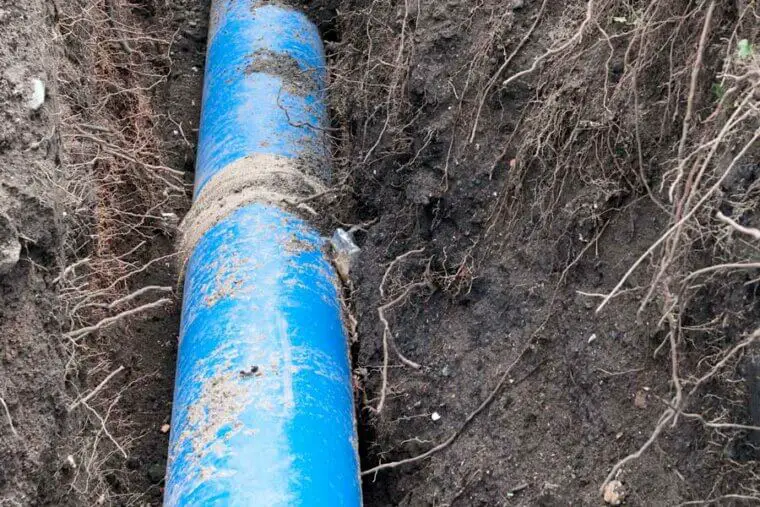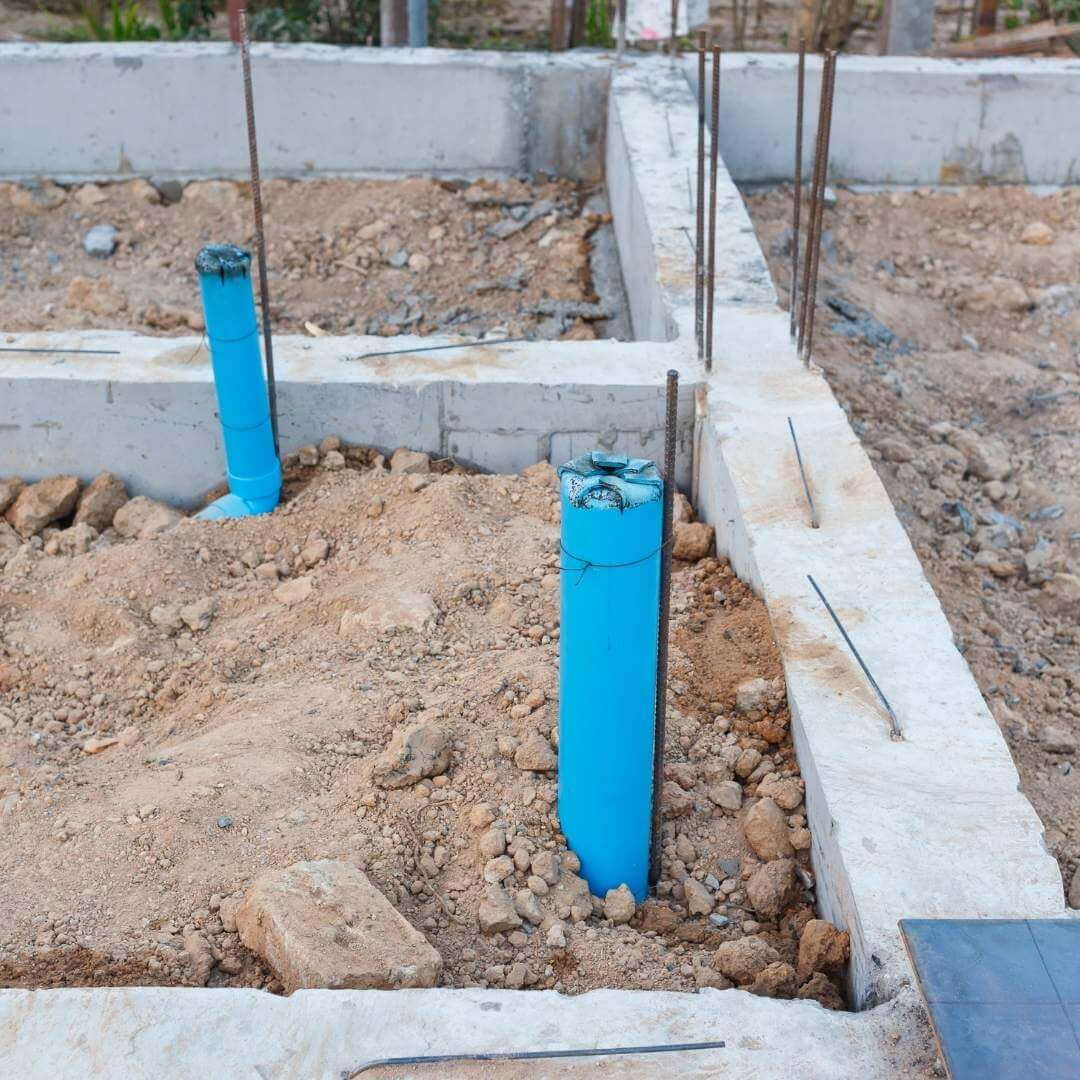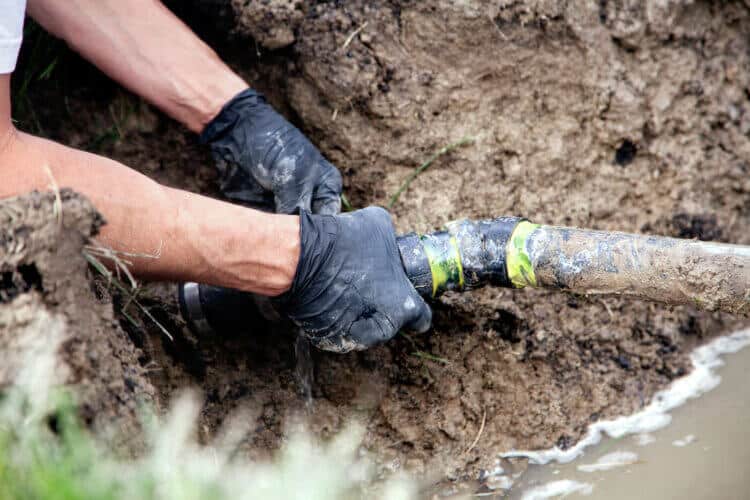“Belly in sewer line” may happen sometimes. Bellies are a frequent issue with sewer pipes and may cause homeowners a lot of hassle. A sewer pipe belly or sag will eventually result in silt and standing water accumulating inside the sewer line.
Over time, it causes erosion, blockage, and a significant sewer line backlog. A sewer line belly is distinguished by a pipe segment that sags or bends downward.
A functioning sewer lateral often has a slope that allows the flow to be aided by gravity. Conversely, a bellied sewer line prevents wastewater from flowing normally through the pipe, resulting in water and silt accumulating.
Geological occurrences like earthquakes, foundation settlement, and soil erosion typically bring on a belly in the sewer pipe. However, it can also happen due to human mistakes, such as shoddy installation or inadequate soil compaction.
Sewer bellies are more prevalent in PVC sewer pipes, which can be more difficult to sustain adequately. They are also more likely to occur in earthquake-prone regions.
Belly in Sewer Line

The depth of the belly and the amount of pressure your system creates to move the water through the pipe determine the severity of a belly in the sewer line. You can leave little dips that don’t interfere with the sewer. However, major issues should be repaired, especially if they indicate more sewer-related problems.
How Serious Is Belly in Sewer Line ?
In most cases, a sewer belly necessitates sewer line replacement, which can become a very large project. The belly frequently contains standing water and sediment build-up, which can cause the pipe to become damaged.
In addition, shifting soils and standing water in the belly can cause sewer pipes made from clay and cast iron to break, separate, and degrade. You might also encounter sewage backup if the water and, eventually, garbage can’t pass the belly.
If you leave a belly in the sewer line, it’s likely that the line may collapse, causing more extensive property damage. Potential health concerns brought on by damaged sewer systems include:
- Methane gas leaking from the sewer line causes gas poisoning
- Illnesses brought on by salmonella and E. coli bacteria
- Respiratory issues brought on by mold
Even though many of the issues arising from a belly in your sewer line are visible, it’s important to carry out sewer inspection to determine the problem’s exact location and damage.
It’s also important to remember, now that you know there’s a sewer belly, that you might need to declare it when you sell your house. Some buyers might request that you repair the belly before you sign the contract.
When to fix pipe belly?

A sewer line belly is difficult to see because sewer lines are underground. Experts employ video inspection equipment and sewer camera examination to find any problems. The video camera is inserted into the pipe.
As a result, plumbers can see inside the sewer more clearly and pinpoint the problem. A good general rule is to have your home’s sewer line inspected every 2 to 3 years because it can be challenging to detect sewer line problems independently.
If you discover that something is wrong with your plumbing, you should also have it inspected. If the belly starts to obstruct normal water flow or results in a broken sewer line, you will typically need to repair the whole sewer line. It’s a sizable project because sewer pipes are usually buried very deep.
Read Also: Types of Sewer Pipes
Instead of using conventional methods of repairing sewer lines by digging into the earth, consider adopting trenchless sewer line repair alternatives. These include pipe relining or pipe bursting. Trenchless sewer repair offers a less involved and more affordable sewage repair solution than traditional procedures.
In cured-in-place-pipe (CIPP) pipe lining, the curing material is poured into the host pipe and allowed to harden. This creates a new pipe [1]. Pipe bursting entails inserting a new pipe in the old pipe’s position while deliberately damaging the old line.
These are the best options for fixing a pipe belly. However, excavation may be required if the problem is mostly caused by settling and grading. Trenchless solutions are not the greatest choice in this situation.
In such a case, the sewer line belly can only be fixed using the open trench technique. The technique involves digging up the pipe and replacing the sagging part. The ground beneath is then properly filled to avoid future sewer line belly problems [2].
Depending on the length of the pipe that has to be replaced, replacing the belly in your sewer line can be rather expensive. Sections that are longer will cost extra. However, the price is still far less than conventional sewer replacement techniques.
Belly in Sewer Line Under Slab

When examining the belly of your sewer line, a drain professional or skilled plumber will also check for sewer line channeling. Sewer line channeling happens when flowing water gradually carves a path into the bottom of a sewer line, much like how a ravine, canyon, or gully forms.
In many instances, the bottom of the pipe may be entirely gone by the time a sewer line channel has become an issue. Such a gap offers a point of entry for tree roots and insects into your home. Channelling is recognized as one of the most typical sewage issues in horizontal cast iron pipes.
When the sewer line is channeled and not bellied, trenchless pipelining is the best option for repair [3]. Since a channeled pipe typically doesn’t have a slope problem, pipe lining can be the answer you’re looking for.
The method entails putting an epoxy-soaked felt liner into the pipe and allowing it to cure. Pipelining is a non-destructive, economical, and ecologically friendly method of mending a damaged line from the inside.
This means you won’t have to destroy your home’s interior or dig up the floors to fix your sanitary drainage pipes. During maintenance, you won’t even have to leave your house. In its place, the old pipe is replaced with a brand-new, PVC-quality line with a 50-year expected lifespan.
Is Belly in Sewer Line Covered by Insurance?

Sewage line damage from common causes is often not covered by homeowner’s insurance. Suppose the line is on your property, and the damage happens suddenly and unintentionally. In that case, your insurance could contribute to the cost of repairs (up to the limits of your policy) [4].
Repairs typically aren’t covered if the pipe damage results from shoddy construction or careless maintenance. In addition, damages brought on by pests, earthquakes, tree roots, or floods are frequently excluded.
Coverage for other structures specified on your homeowner’s policy may include the sewage line if it is on your property. It normally has a limit of 10% of the insured value of your home. But it may differ.
Your policy may cover sewage line damage brought on by hail or windstorms, explosions, lightning, fire, damage from automobiles or airplanes, vandalism, or falling objects.
Several factors influence whether or not house insurance will pay for the plumbing costs associated with replacing the sewer line. They include the sewer line’s age, material, the particular insurance policy and riders, and the position of the problem.
Additionally, the city may have a program to assist with the expense or cover it entirely since your sewer line may link to the city sewer system. Nevertheless, you can include a few endorsements in your homeowner’s insurance to cover water damage brought on by sewage backups and your sewer lines.
For instance, you may include service line coverage in your policy. This will protect your sewer lines and other utility lines from damage. In addition, you can add water backup coverage to your insurance plan for additional protection against water damage to your property brought on by sewage or drain backups [5].
Read Next: Best Sewer Camera
Conclusion
Understanding what causes a belly in a sewer line can help determine why backups or blockages occur. However, repairing it is challenging and expensive. But the cost varies depending on how serious and extensive the damage is.
If sewer line channeling is left unattended, it may also result in serious issues with your sewer line. Pipelining may be the best option to solve this issue because it requires less excavation.
Proper soil bedding is required during installation to prevent sewer line bellies. Soil bedding is best achieved using large-format gravel and sand. If inappropriate materials are chosen for this process, specific pipe portions will sink deeper into the ground over time, and the line will develop a belly.
For gravity to move waste away from a home or structure, a sewer line must have the proper slope and grade. Professionals specializing in trenchless sewer lines employ the latest cutting-edge equipment to ensure adequate slope, thus preventing line bellies and the ensuing build-up of silt.

Michael Davis is a heating & plumbing expert who currently works as independent contractor in SC. He also writes for Plumbertip.
For almost 10 years he worked on various plumbing tasks across South Carolina.


